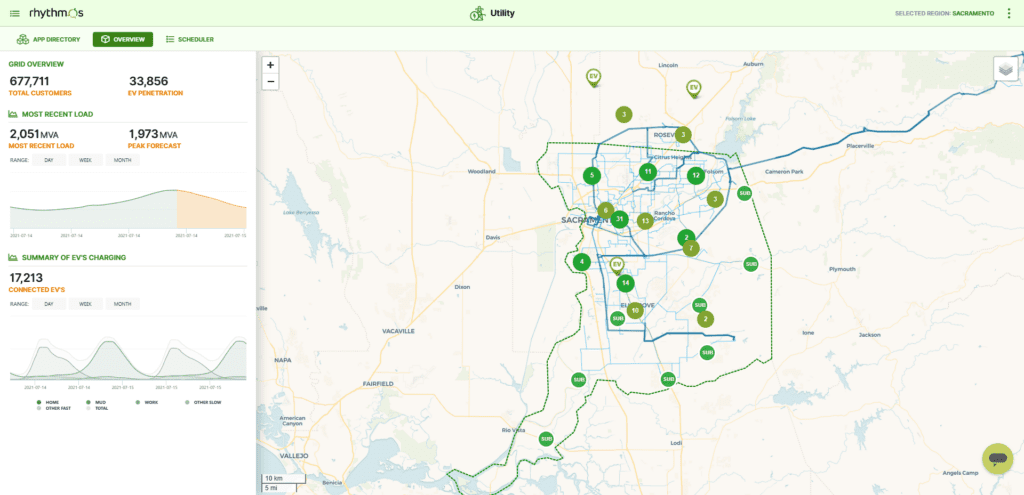Lower-Cost Managed Charging Paves the Way for EV Adoption
It’s no secret that the widespread adoption of electric vehicles (EVs) is pivotal to creating a more sustainable future. Fortunately, consumers are embracing electrification, with reports indicating that EVs will make up nearly 67% of new light-duty vehicle sales and 46% of new medium-duty vehicle sales by 2032.
While these reports are promising, the transition to decarbonizing our roads faces a significant speed bump: an aging grid. EVs require an excessive amount of electricity to “fuel,” increasing energy requirements and putting additional strain on a grid not built to accommodate such high demands. Upgrades are necessary now, as the REPEAT Project found that U.S. greenhouse gas emissions will increase by 800 million tons annually by 2030 if the grid fails to develop more than 1% yearly. To hit net zero, the grid must grow 2-3% yearly.
COMMENTARY
Eager to accelerate these changes, some utilities are planning to conduct massive infrastructure overhauls, but these upgrades are often costly and time-consuming, and will ultimately delay EV proliferation. Instead of waiting for physical upgrades, utilities should first consider advanced software solutions for EV charging optimization that can provide the asset-level insights they need to maximize EV uptake within the limitations of today’s distribution grid.
Not All ‘Managed Charging’ Solutions are Created Equal
When a designated neighborhood only has one or two residents with an EV, utilities can take an unmanaged charging approach—meaning EV charging occurs when it’s most convenient to the owner. However, as EV adoption accelerates within the neighborhood, the charging load growth can create a severe problem for utility providers taking the unmanaged approach.

Utilities seeking solutions to this mismatch between EV demand and distribution grid capacity may get a deceptively simple answer: managed charging. Basic managed charging platforms avoid demand charges by carefully monitoring time-of-use (TOU) rates. By using such software to coordinate EV charging schedules, utilities can shift charging to off-peak hours and limit the maximum draw on the grid at specific times. This solution may help minimize charging costs for EV owners and slow the pace of required utility upgrades, but it falls short of extracting the most consumer and utility value available.
When implemented properly, managed charging can be a game-changer; however, most TOU-based models do not address the entire value stack that holistic charging offers today, and that can exacerbate challenges or add unnecessary costs. For instance, if multiple EVs within a service area adopt the same charging schedules, the sudden shift of this new load to the same off-peak hours can inadvertently create a new demand peak, leading to detrimental overloading of a given service transformer.

These simplified solutions prioritize the EV owner, offering some relief, but do little to help utilities understand and optimize EV charging within the limits of existing service transformers, feeders, and substations. To ensure the grid can sustain mass EV adoption, utilities need a managed charging solution that goes beyond traditional TOU optimization at the site and marries the customer side of the meter with the utility’s side, optimizing critical assets throughout the distribution network.
Charging Software Solutions for Today—and Tomorrow
Until recently, the industry’s definition of managed charging has been limited in scope, too often prioritizing driver and vehicle preferences and customer engagement while ignoring additional grid challenges. In these instances, assets on the meter’s utility side, consisting of transformers, feeders, and substations, are not considered part of the overall orchestration of managed charging.

Advanced managed charging solutions work to find a healthy balance between the two sides of the meter. By identifying EV charging signatures, disaggregating the EV load from the home’s native load, and forecasting usage needs and charging predictability for the days ahead, the utility can be assured that EV charging is efficiently coordinated to avoid overloads and minimize energy costs. In doing so, an advanced managed charging solution can more than double the number of EVs charging on one transformer before a physical infrastructure upgrade is needed—and further streamline the geospatial and temporal constraints for feeders and substations.
This optimization level meets the EV transition where it is today, yielding a win-win for both utilities and EV owners. For utilities, the ability to aggregate and understand charging loads at a granular level mitigates the impact of EVs on individual feeders and transformers, maximizes the utilization of existing assets, and helps guide future grid upgrades to where they are most urgently needed. For EV owners, these solutions can ensure that their vehicles do not put additional strain on an already tired grid while avoiding unplanned charging costs.
Grid decarbonization will only be possible with the electrification of transportation. As of 2021, the transportation industry was responsible for nearly 30% of U.S. greenhouse gas emissions, making it the most significant emitter by economic sector. As such, the transportation industry must lead the way in reducing greenhouse gases so we may achieve our net-zero goals. Advanced managed charging software optimizes the use of existing grid infrastructure based on real-world charging needs, allowing greater EV adoption at a lower cost today while guiding the infrastructure upgrades of tomorrow.
—Ken Munson is CEO of Rhythmos, a provider of grid optimization technology. He was a speaker at POWER’s Distributed Energy Conference in August 2023, talking about “The Electrification of Transportation.”